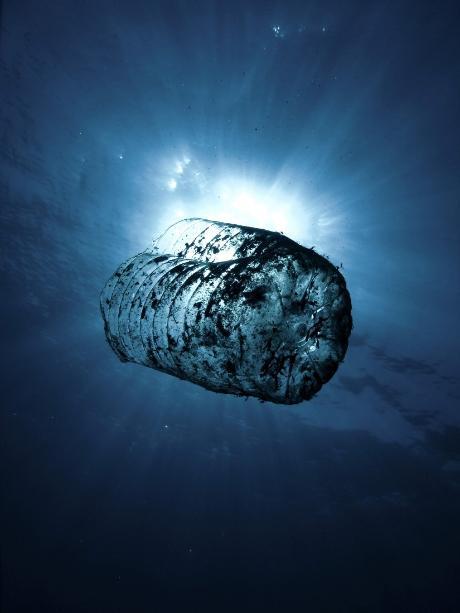
Man-made chemicals have played an important role in the development of our modern society. They have revolutionised areas such as healthcare and farming and they are essential in the manufacture of a wide range of consumer products.
Unfortunately, some man-made chemicals can have effects that were not intended. These unintended impacts can harm the environment and our health and wellbeing. For example, the WHO estimate that 42% of strokes could be prevented by reducing or removing human exposure to chemicals. For this reason, many chemicals (such as some pesticides) have been banned and others are in the process of being banned. Despite these bans, some chemicals stay in the environment for decades and continue to have a harmful effect. These are known as persistent chemicals.
The World Health Organization estimate that global production of chemicals will almost quadruple by 2050 when compared to 2010 production levels. It is very important that any new chemicals which are proposed to be used and released in the environment are properly assessed at a very early stage. This is important to ensure that we do not make the same mistakes in allowing chemicals to be used which result in long-term environmental and health impacts.
What are the potential effects of man-made chemicals?
What's being done to prevent the impact of chemicals?
What can I do to reduce my exposure to chemicals?
What’s the role of the EPA and what regulations are in place?
Overview of key chemicals legislation

Chemicals in the environment can cause damage to plants, animals and humans. For example, DDT is a chemical (now banned) that was commonly used as a pesticide in agriculture. DDT had unintended effects on wildlife, in particular on birds. It affected the reproduction rate of birds and therefore severely reduced bird populations. This risk to birds was highlighted in the book ‘Silent Spring’ which was published in the early 1960s and raised awareness about the effects of pesticide use on wildlife and habitats. Although DDT has been banned for many years, many other chemicals that have been used until recently, and others that are still in use, are known to impact on the environment and on humans.
The World Health Organization (WHO) estimates that 1.6 million lives were lost globally in 2016 due to exposure to chemicals. This is based on exposure to a limited set of chemicals for which the health effects are well known. At a European scale, it is estimated that annually there are around 0.4 deaths per thousand population linked to chemical exposure. This equates to around 2,000 deaths in Ireland per annum, which is the same scale as premature deaths associated with exposure to air pollution. Apart from premature deaths, chemical exposure can also significantly negatively influence quality of life. For example, in Europe it is estimated that nearly 1.9 million babies are born annually with mercury levels above recommended values, resulting in lifelong effects on learning and brain development.
Although we know that individual chemicals have effects, we know less about how mixtures of different chemicals can affect humans and the environment. Generally, the effects of chemicals have been assessed and regulated based on the known effects of individual substances, however in the real-world we are exposed to many different chemicals at the same time. A Danish study examined the risk to toddlers from the combined effects of different endocrine disrupting chemicals in consumer products, indoor air/dust and food. Endocrine disrupting chemicals (such as Bisphenol-A, found in plastics) are chemicals which interfere with the human hormonal system and cause developmental, reproductive, immune system and other health effects. The study found that the combined concentrations of different endocrine disrupting substances from a range of different sources was significant and posed a risk to children, recommending that exposure to these chemical mixtures should be reduced.
Health and Safety Authority - Chemicals
Food Safety Authority of Ireland - Chemical food surveillance activities
WHO report on the impacts of chemicals in the environment
European Commission - Chemicals
European Commission - Non-toxic environment strategy
European Environment Agency briefing on consumption of hazardous chemicals
A wide range of legislation is in place to reduce the effects of chemicals on the environment and human health. Some of these are summarised in the sections below which outlines the role of the EPA and the current legislation which is in place. The legislation is constantly being updated to address new risks and challenges posed by chemicals being released into the environment.
The European Commission recently developed a new strategy on future environmental policy, called the EU Green Deal. As part of the Green Deal, the EU will develop a ‘zero pollution’ strategy which will include actions to deal with chemical pollution in a more comprehensive way. This will result in future regulations in Europe and Ireland to further reduce the effects of chemicals we use now. It will also ensure that chemicals produced in the future do not have negative effects on human health or the environment.
The Health and Safety Authority and the Environmental Protection Agency hosted the EU Chemicals Strategy for Sustainability Conference in October 2023, focusing on what the future may hold for EU chemicals legislation.
The European Commission published a chemicals strategy for sustainability on 14 October 2020. It is part of the EU’s zero pollution ambition, which is a key commitment of the European Green Deal. There are a number of actions already underway under the strategy, spanning key chemical and circular economy policy areas.
Link to conference presentations.
European Commission web pages on the Green Deal

We can all take actions to reduce our own exposure to chemicals and also to ensure that our own activities do not release chemicals into the environment which could harm ourselves, our families, neighbours and other citizens. Here are a few things that you can do to help reduce exposure to chemicals and to reduce the release of chemicals into the environment from your home:
The Health and Safety Authority provides guidance for employers and employees on chemical safety in the workplace.
-500x332.jpg)
The EPA has a specific designated role under a range of different regulations which address the risks posed by chemicals in the environment. These individual regulations are summarised below, with further detail available through the links provided. These regulations include, for example, the Persistent Organic Pollutants (POPs) Regulations. POPs are harmful chemicals which remain in the environment for a long time, causing a long-term risk to the environment and human health. The regulation includes actions to control POPs, including banning or restricting the production, use, import and export of POPs and measures to reduce and or eliminate their releases. Further information on the POPs regulations and other relevant chemicals legislation are presented below.
Another important function of the EPA in relation to chemicals is to raise awareness of the risks posed by chemicals and what actions need to be taken to control and minimise the effects of significant chemicals.
In addition to these specific regulatory roles on chemicals, the work of the Agency in other areas includes a focus on chemicals, preventing release of chemicals into the environment and monitoring of our environment to assess the levels and effects of chemicals. These areas of work include:
The EPA is part of a much wider network of organisations which have a role in protecting the environment and citizens from the harmful effects of chemicals. These other organisations include:
The Health Service Executive web page on environment and health
Health and Safety Authority Chemicals web page
Food Safety Authority of Ireland web page on chemical food surveillance activities
As outlined above, there are a number of different regulations which address the control of chemicals across a range of activities. The regulations in which the EPA has a role are summarised below and further information is provided in additional links.
Persistent Organic Pollutants (POPs) Regulation
End-of-Life Vehicles (ELV) Directive
Polychlorinated Biphenyls (PCBs)
Market Surveillance Regulations
POPs are a group of chemicals that persist in the environment, may accumulate in food and human tissue and are toxic. The Stockholm Convention on POPs is a global agreement overseen by the United Nations Environment Programme, that aims to eliminate or restrict the production and use of POPs. The Stockholm Convention is implemented in the EU through the EU POPs Regulation (Regulation (EU) 2019/1021).
There are currently 30 POPs listed in the Stockholm Convention and several additional chemicals are proposed for listing. POPs can be divided into two categories, intentional POPs, which includes pesticides and industrial chemicals and unintentional POPs such as dioxins and furans produced from the burning of fossil fuels or waste.
The Stockholm Convention bans or restricts the production, use, import and export of intentional POPs and includes measures to reduce and/or eliminate the release of unintentional POPs into the environment.
The EU POPs Regulation requires that each EU country carries out:
The Stockholm Convention first became law in The Republic of Ireland in 2010 and the Irish POPs Regulations (S.I. No. 146 of 2020) enacts the EU POPs Regulation and outlines the role of the EPA and other public bodies in reducing and eliminating POPs in Ireland. The EPA is the competent authority for the EU POPs Regulation in Ireland. This means that the EPA is responsible for:
More EPA information on the POPs Regulations.
More information about PFAS (Per- and Polyfluoroalkyl Substances).
REACH stands for the Registration, Evaluation, Authorisation, and Restriction of Chemicals. The REACH Regulation (Regulation (EC) 1907/2006), covers virtually all substances (hazardous and non-hazardous) manufactured, imported and used within the EU. The REACH Regulation does not regulate wastes. Under the Irish Chemicals Acts, the EPA is responsible for the prevention of environmental pollution under REACH within the State.
The mechanisms used under REACH include:
REACH also aims to support the functioning of the EU chemicals industry by promoting innovation towards use of more sustainable chemicals and reduce animal testing. Additionally, REACH sets out how risks associated with uses of chemicals is assessed and the information to be provided to the users of these substances.
The EU Chemicals Strategy for Sustainability aims to protect the EU citizens and their environment from the impacts of hazardous substances while fostering a sustainable chemicals industry through innovation. It is envisaged REACH will be central to ensuring the coherent approach required towards chemicals regulation. The strategy is central to attainment of the EU’s Green Deal initiative. The strategy’s proposed actions include, among other things:
European Chemicals Agency – Understanding REACH
Health and Safety Authority – What is REACH?
Health and Safety Authority – Chemicals Acts 2008 and 2010
REACH Regulation (Regulation (EC) 1907/2006) Consolidated
EU Chemicals Strategy for Sustainability
What is the difference between POPs REACH, RoHS?
Mercury is a highly toxic chemical and when released into the environment presents a significant risk to both the environment and human health.
Mercury emissions in Ireland and Europe are predominantly from the burning of fossil fuels such as the burning of coal in our homes and in industrial processes. Mercury released into the air can travel very large distances, and hence there are impacts associated with mercury even in areas where mercury usage or release is relatively low.
Europe and Ireland have been proactive by putting in place strict regulations such as Regulation (EU) 2017/852 which was transposed into Irish law under S.I. No 533/2018 -European Union (Mercury) Regulations 2018, these regulations are designed to limit the use and release of mercury. The EPA is the competent authority for the EU mercury regulations in Ireland including reporting to the European Commission and to the Global Minamata Convention on Mercury. In addition, the EPA is also responsible for licensing of industrial activities and ensuring that operators are meeting relevant limit on emissions of mercury (in particular, from activities such as burning coal for power generation and cement manufacture, and from waste incineration activities).
More EPA information on mercury
Check out the European Commission Mercury Webpage
Find out more about how mercury can enter our bodies
Find out more about the Minamata Convention on Mercury
Download Minamata Convention text and Annexes
Read more about Mercury and fish consumption
Download EEA Report No 11/2018 - Mercury in Europe’s Environment
The Directive on the Restriction of the use of Certain Hazardous Substances in Electrical and Electronic Equipment (RoHS Directive) limits the levels of hazardous substances in components and materials in electrical and electronic products including many consumer goods. By reducing the quantities of these hazardous substances in electrical and electronic equipment (EEE) the Directive minimises the risk of occupational exposure during manufacture and recovery and minimises the release of these chemicals into the environment.
Manufacturers, importers and retailers of EEE covered by the Directive must ensure they only offer compliant products. Also, there must be at least one economic operator, e.g. manufacturer, importer or authorised representative, located within the EU, with official responsibilities in ensuring products are compliant before they can be made available on the market.
The Environmental Protection Agency is the designated market surveillance authority for the enforcement of the RoHS Directive in Ireland. Checks are made on product technical files and in some cases analysis of components and/or materials used in the EEE may have to be carried out.
RoHS Directive – Directive 2011/65/EU – Consolidated version
RoHS Regulations – S.I. 513 of 2012
The EU End-of-Life Vehicle Directive (2000/53/EC) sets out measures to prevent waste from vehicles and minimise the impact of end-of life vehicles (ELVs) on the environment. This contributes to the protection, preservation and improvement of the quality of the environment.
Whilst the Directive itself addresses a broad range of issues related to the management of ELVs, the EPA is responsible for rules related to the prohibition on heavy metals in vehicles and their materials and components. The heavy metals which are prohibited are lead, mercury, cadmium and hexavalent chromium.
Producers and component suppliers have obligations to comply with the requirements of the regulations. Relevant parties who need to be aware of, and comply with, the requirements of the directive include:
Guidance for Prohibition on Heavy Metals in Vehicles
ELVES producer responsibility scheme for end-of-life vehicles
EU Directive and further information on ELVs
Irish statutory instrument on ELVs
The Directive on Batteries and Accumulators and Waste Batteries and Accumulators (Batteries Directive) aims to reduce the environmental impact of a wide range of batteries and accumulators placed on the market within the EU. The Directive achieves this objective by restricting the levels of certain hazardous substances in the products concerned and by setting targets for their recycling. The Directive also imposes product labelling requirements.
The Directive applies to virtually all battery types from button cells to industrial batteries including those supplied in products. There are certain exemptions allowed e. g. those used in emergency and fire alarms, medical equipment, those designed exclusively for military systems and equipment intended for space applications.
Find more EPA information about the batteries directive
Batteries and Accumulators Directive – Directive 2006/66/EC
Irish Batteries Regulations – S.I. 283 of 2014
European Commission – Batteries and Accumulators Legislation

The Directive on the Limitations of Emissions of Volatile Organic Compounds due to the use of organic solvents in certain Paints, Varnishes and Vehicle Refinishing Products (or Paints Directive), aims to reduce the risk from volatile organic compounds (VOC) to human health and the environment. Under still, sunny conditions, VOC may combine with some components of car exhaust fumes to form ground level ozone. Ozone can cause respiratory illness and damage crops and general ecosystem. Also, ozone may travel hundreds of kilometres from where it was produced.
The Paints Directive limits the VOC content of many commonly used decorative coatings such as paints and primers and of automotive refinishing products. The EPA is the lead competent authority for the Directive within the State with Local Authorities responsible for enforcement in their functional areas.
The Directive sets out in Annex I the product categories and specific sub-categories covered. The specified VOC limits for each product sub-category are outlined in Annex II to the Directive. Additionally, Annex III shows the methodologies to be used to determine the VOC content of the products.
Also, the Directive requires products within its scope to be labelled when placed on the market. The product label must include the following information:
Also, the Irish Regulations, European Union (Paints, Varnishes, Vehicle Refinishing Products and Activities) Regulations 2012 (Statutory Instrument 564 of 2012), enacting the Paints Directive into Irish law, require vehicle refinishers to register with the Local Authority in whose functional area they are located.
European Commission – Paints Directive
Paints Directive – Directive 2004/42/CE – Consolidated Version (2019)
European Union (Paints, Varnishes Vehicle Refinishing Products and Activities) Regulations 2012
PCBs are chemicals that were used in the past in electrical equipment such as transformers, capacitors and fluorescent lighting ballasts, as cooling and isolating agents. PCBs are persistent organic pollutants (POPs) and are extremely harmful to the environment and at higher levels, human health. PCBs are listed in Annexes A and C to the Stockholm Convention on POPs. Exemptions relating to PCBs are limited to existing equipment that contains or is contaminated with PCBs, which should be identified and removed no later than 31st December 2025. The EPA is the body responsible for the Irish national inventory of PCB holdings. To assist holders of PCB-contaminated materials and/or equipment in notifying the EPA of such holdings, a PCB Online Notification system is available.
Protecting the welfare of EU consumers and their interests, including the environment, is key to maintaining confidence in the EU Internal Market. EU consumers must be confident the goods they purchase will not harm them or their environment. Effective market surveillance is one of the fundamental tools used to protect EU consumers and their interests by removing products causing harm to human health and/or the environment from the market. Additionally, market surveillance should ensure fair competition by discouraging unscrupulous operators placing non-compliant products on the market while putting compliant operators at a competitive disadvantage with sometimes serious consequences. Due to the free movement of goods within the EU, once a product is made available on the EU market it can move freely throughout the EU. Therefore, while market surveillance is the responsibility of each Member State, for it to be effective it must be carried out in a consistent manner and at a consistent level of intensity throughout the EU.
The EPA carries out market surveillance in relation to certain internal market legislation which includes the Batteries Directive, Fluorinated Greenhouse Gas (F-Gas) Regulation, Mercury Regulation, Ozone Depleting Substances (ODS) Regulation, Paints Directive, Persistent Organic Pollutants (POPs) Regulation, the Registration, Evaluation, Authorisation and Restriction of Chemicals (REACH) Regulation and the Restriction on the Use of certain Hazardous Substances in Electrical and Electronic Equipment (RoHS) Directive.
More EPA information about market surveillance